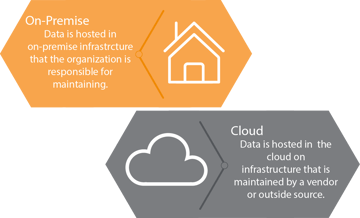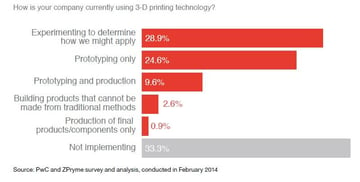Cloud computing has significantly penetrated all sectors of the economy. This validates one of the sayings in the early days of cloud computing: “The cloud is the computer.”
Instead of using on-premises computing services (i.e. computing resources from an on-premises data center), enterprises are increasingly accessing all sorts of computing services on the cloud (i.e. on the data centers of a provider).
These services include e-mails, storage space, and enterprise databases. It can also involve systems such as Enterprise Resource Management (ERP), Customer Relationship Management (CRM), Asset Management (AM) and others relating to business information.
The expanded use of cloud computing enables companies to benefit from the capacity, scalability and performance of the cloud. It also enables enterprises to implement a range of novel business models, which are disrupting whole sectors of the economy. Indeed, the implementation of successful business models such as Airbnb, Booking and Uber are empowered by cloud computing.
I can argue that cloud computing and cloud-based business models will be soon disrupting industrial maintenance as well. The first signs are already evident:
All vendors of industrial maintenance solutions are building cloud-based platforms and services.
Furthermore, equipment vendors are seeking opportunities to expand their maintenance solutions portfolio on the basis of cloud-based services, which are collectively delivering a radically new “Maintenance-as-a-Service” paradigm.
Industrial maintenance: Why go cloud?
Offering maintenance services in the cloud hinges on the integration of multi-sensor data within a cloud computing infrastructure. This is already a trend in the Industrial Internet-of-Things (IIoT), as measurements from sensors and wireless sensor networks are increasingly integrated and processed in the cloud.
These integrations provide a number of distinct benefits including:
- Capacity: The cloud provides the means for storing very large volumes of data. This is important given the large datasets that need to be processed as part of maintenance processes, including the processing of historic information.
- Scalability: Cloud computing provides cost-effective scalability, which is key when dealing with the rapid and continually-growing amount of maintenance datasets, including data from sensors and business information systems.
- Elasticity: A key characteristic of cloud services is their ability to optimize the use of computing resources, by allocating more storage and processing capacity during times of peak demands. This optimization takes place in an automated and elastic manner and does not rely on human intervention for provisioning or deprovisioning computing resources.
- Reliability: Cloud infrastructures provide high redundancy and reliability. This is critical to ensure the continuity and graceful execution of maintenance and asset management applications.
- Quality of Service: The cloud provides access to the required amount of computing resources, which guarantees low latency in data processing. Overall, it provides a high quality of service.
- Pay-as-you-go and pay-as-you-grow: The integration of maintenance data in the cloud removes the need for costly upfront investments (i.e. capital expenses) in computing infrastructure. Rather, the cloud enables plant owners, plant operators and equipment vendors to convert capital expenses to monthly bills (i.e. operational expenses).
In a cloud context, users pay for what they use. Likewise, they are provided with ways to start a maintenance service with low investments in computing infrastructure. They can gradually pay more as they scale up cloud-based maintenance deployments, including the addition of machines, devices and datasets.
Beyond these benefits, the integration and processing of datasets in the cloud enable the support of entirely new services for industrial maintenance, based on novel business models that emphasize access to these services from remote and in a pay-per-use fashion.
This is the most important benefit of using cloud services for industrial maintenance, since it holds the promise to disrupt the way maintenance services are deployed from equipment vendors and offered to their customers.
Rise of Maintenance-as-a-Service
Based on the successful integration of maintenance datasets in the cloud (i.e. sensors and business information systems data), equipment vendors are able to offer a host of new services to their customers. Some digital cloud-based services include:
Fault detection as a Service: As part of this service, plant owners and operators are provided with detailed information about the status of their assets, including predictions about anticipated failures based on parameters such as EOF (End of Life) and MTBF (Mean Time Between Failures).
This information can be readily accessed for any piece of equipment and visualized as part of a cloud-based application.
Recommendations as a Service: This service provides recommendations about when to perform maintenance for a specific piece or component of equipment.
Recommendations are based on the prediction of OEE (Overall Equipment Efficiency) under different probabilistic scenarios, which take into account the assets’ risk of failure.
These recommendations can advise about the optimal time for performing the maintenance of an asset and can be also visualized in a Graphical User Interface (GUI).
Maintenance Operations Management as a Service: This service provides information about the operations entailed in a maintenance contract for one or more assets.
The service includes presentation and visualization of the contract’s status and of a specific maintenance process, including compliance information and supply chain aspects (such as parts’ delivery dates).
Their scope may also include automated activation of supply chain actions such as placement of orders in the ERP. Such actions are greatly facilitated by the deployment of enterprise systems in the cloud.
Simulation-as-a-Service: As part of this service, maintenance engineers are able to simulate future operations of assets based on historical data in the cloud.
In this way, maintenance workers can simulate and visualize various what-if scenarios in the scope of FMEA (Failure Mode and Effects Analysis) operations. Overall, simulation-as-a-service can greatly boost maintenance decisions.
Training-as-a-Service: Using data available in the cloud, equipment providers can offer a rich portfolio of cloud-based training services, including services based on Virtual Reality (VR) and/or Augmented Reality (AR).
These services could instruct maintenance workers about how to perform maintenance in their plant. These recommendations take into account the real-life status of their plant rather than a set of pre-defined and pre-configured parameters provided by the equipment vendor.
The above list of services is not exhaustive. Equipment vendors are able to devise and offer additional services or even renaming current services (e.g., condition or health monitoring as a service).
Equipment vendors are likely to bundle two or more of these services under a broader umbrella such as predictive maintenance as a service.
All these services can be collectively grouped as Maintenance-as-a-Service (MaaS), which denotes their cloud-based, pay-as-you-go structure.
The enabling platforms market
In order to support the increase of cloud-based services for plants and the rise of MaaS, IT vendors are building and offering scalable, cost-effective cloud-based platforms.
They are also building ecosystems around these platforms or expanding their existing ecosystems in the industrial automation space. One of the most prominent examples is IBM, which offers its Watson IoT platform in the cloud. In addition to providing scalable cloud functionalities, Watson enables advanced intelligence over sensor and enterprise data based on “cognitive analytics”.
Other cloud platforms include Microsoft’s Azure IoT Suite, SAP’s HANA Cloud platform, Amazon AWS IoT, the ThingWorx platform and LogmeIN’s Xively platform.
Maintenance services are offered by leaders in industrial automation solutions, including SIEMENS, Bosch and ABB. In several cases, there are partnerships between industrial maintenance solutions vendors and IT providers of cloud services to offer effective solutions. In this landscape, equipment vendors are given opportunities to partner with both IT and/or maintenance solution vendors in order to build their own suite of MaaS services.
For example, SIEMENS MindSphere cloud solution is built over SAP's HANA cloud. This integration provides the means for processing data and executing services from machines and other devices on the plant floor, enabling predictive maintenance applications.
Barriers to quicker and wider adoption
The MaaS vision is certainly very promising and will likely deliver a host of business benefits. Nevertheless, the process of development, deployment and offering MaaS services is still in its infancy as part of the ongoing digital transformation of the industry.
In this context, the pace of MaaS adoption will be affected by the following factors:
- Security and data protection concerns: Plant owners are wary of having their data in a third party’s infrastructure, despite the advanced security and data protection features of cloud infrastructures.
These concerns can be alleviated based on better awareness, or by deploying their own private cloud. - Branding and business modeling issues: Based on service descriptions, equipment vendors and maintenance solution providers have a rich set of options for structuring and offering various maintenance-related functionalities.
In most cases, equipment manufacturers continue to seek for the best way to structure and offer these services. There is a still a need for bundling services in a way that gives value to plant owners and operators, while generating revenues for maintenance solution providers. - Innovation: The MaaS concept provides room for devising and deploying innovative solutions, beyond what is currently possible. The extent to which solution providers will use the cloud to innovate will be critical for the wider adoption of respective solutions.
Sooner or later, cloud-based solutions for industrial maintenance will be a reality.
Maintenance workers and engineers need not know the technical details, but should be able to understand the value of cloud-based industrial maintenance solutions.
While vendors will provide all the required digital plumbing, maintenance personnel will have to innovate based on the MaaS deployment and use.

